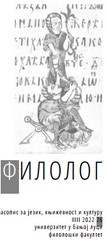EКФРАЗА У КИТСОВОЈ „ОДИ ГРЧКОЈ УРНИ“
EKPHRASIS IN KEATS’S “ODE ON A GRECIAN URN”
Author(s): Tatjana RistićSubject(s): Visual Arts, Aesthetics, Theory of Literature, British Literature
Published by: Филолошки факултет Универзитета у Бањој Луци
Keywords: ekphrasis; John Keats; “Ode on a Grecian Urn“; spatial arts;
Summary/Abstract: In order to fully question the issue of ekphrasis in John Keats’s ”Ode on a Grecian Urn”, this paper begins by giving a brief historical and theoretical framework of ekphrasis, and then analyses a concrete ekphrasis in Keats’s poem. Historically speaking, the meaning of ekphrasis made a large shift in modern times compared to the original. Ancient Progymnasmata do not narrow the term based on subject matter, but rather define it using the category of vividness, enargeia, and only later through the examinations of ancient ekphrasis of works of spatial arts, in literary texts as well as in rhetorical ones, ekphrasis becomes narrowed to a literary evocation of works of spatial arts. This happens in Spitzer’s analysis of the poem in the second half of the twentieth century, thus proving “Ode on the Grecian Urn” to be a crucial text in rethinking the term. This paper tends to reconcile the original and modern theories of ekphrasis through the poem itself. In a theoretical context, ekphrasis’s share in narration and description, and its discursive features are shown, opening the debate on the common linkage of ekphrasis to description, and alienation from narration. Choosing to address ekphrasis from the perspective of the ekphrastic poetry itself rather than a theoretical point of view, the paper shows how the urn cannot solely be seen as “silent” since it strives to tell a legend, a narrative, which is contained in the urn as an aesthetic object and work of sculptural art. This text does not tend to discover the real models for the ekphrasis, but it does offer some sculptural works and paintings which could have inspired Keats. The text is more inclined toward unveiling the discursive context which could have influenced the poet: the (meta)aesthetics of ancient Greece, derived both from poetry and philosophy. The most important objective of the paper is to offer a new reading of the poem through a critical dialogue with the most accepted readings of the “Ode”, primarily those of Spitzer and Brooks, and through questioning of common places in literary criticism of the poem.
Journal: Филолог – часопис за језик, књижевност и културу
- Issue Year: 13/2022
- Issue No: 26
- Page Range: 370-393
- Page Count: 24
- Language: Serbian

